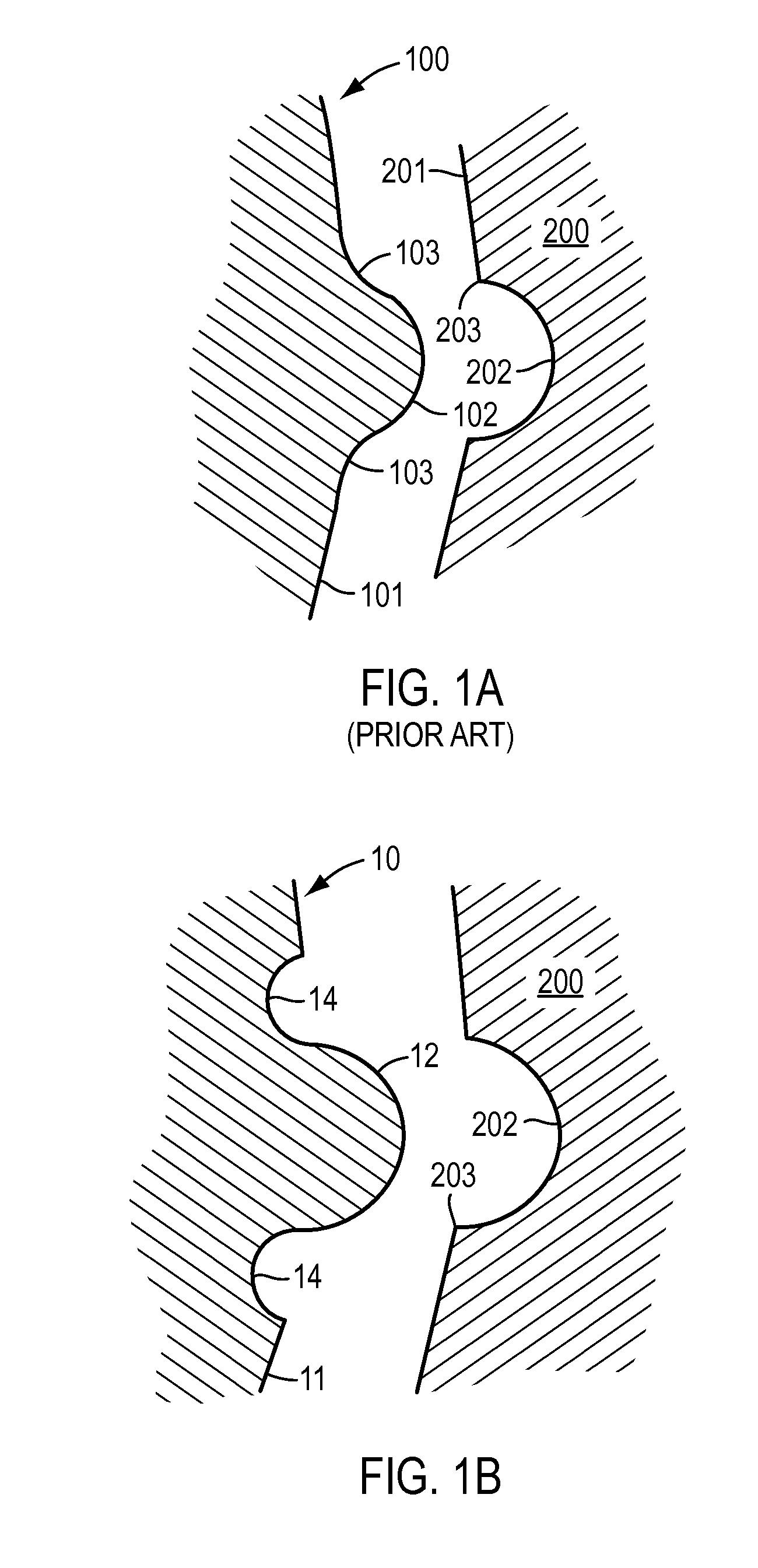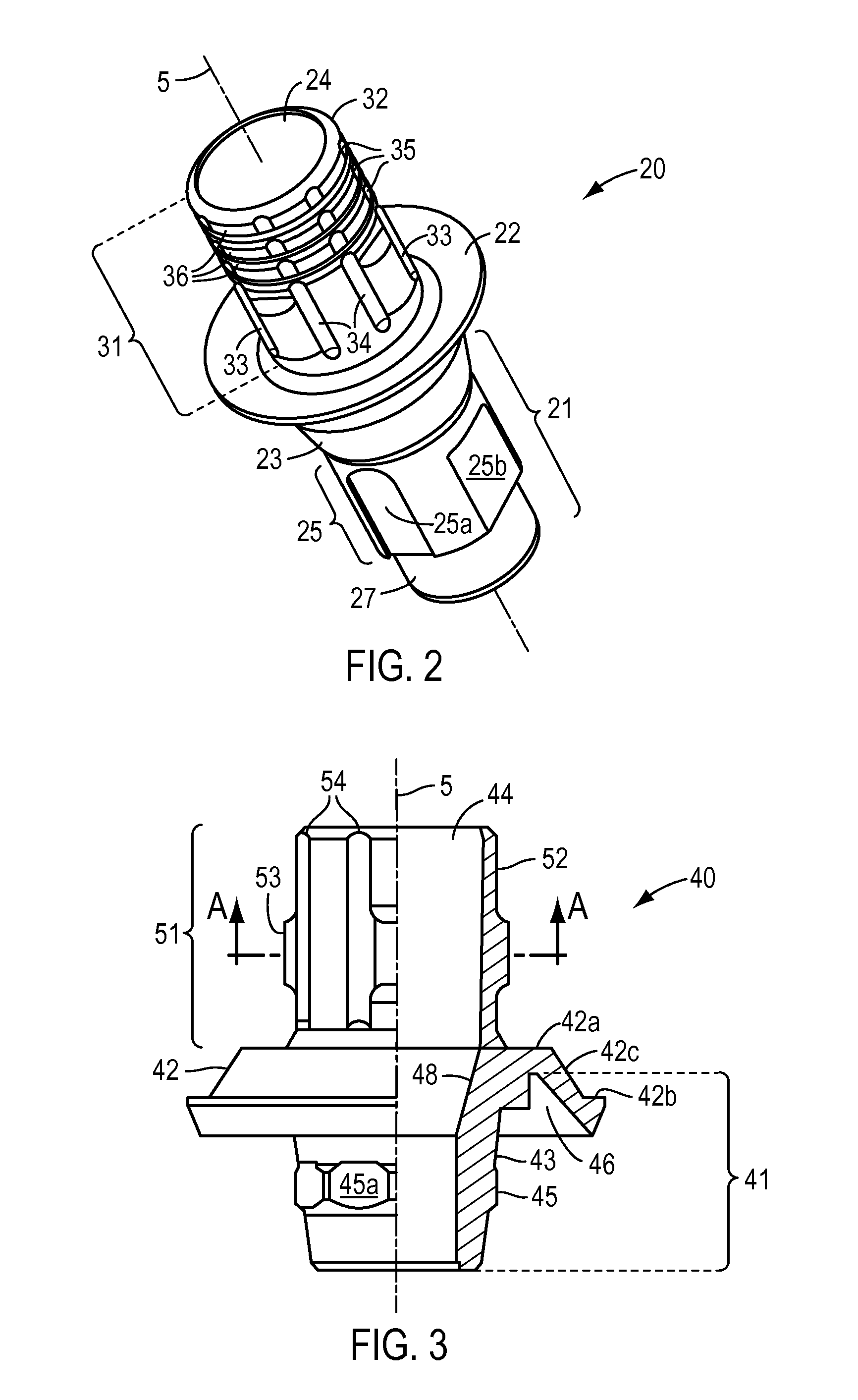Abutment inlay
a technology of inlay and overlay, which is applied in the field of inlay of dental components, can solve the problems of colouring, visible and unsightly exposure, and displacement of gingiva and the corresponding exposure of the implant structure, so as to improve the fit between inlay and overlay, and facilitate the manufacturing process of hybrid abutments.
- Summary
- Abstract
- Description
- Claims
- Application Information
AI Technical Summary
Benefits of technology
Problems solved by technology
Method used
Image
Examples
Embodiment Construction
[0082]FIG. 2 shows an inlay 20 in accordance with the present invention. It comprises apical portion 21 having implant connection geometry. The apical portion 21 is shaped for insertion into an internal bore of a dental implant. Apical portion 21 comprises a conical portion 23 tapering in the apical direction and, apical of conical portion 23, anti-rotation means 25. In the present embodiment anti-rotation means 25 comprises a series of grooves 25a and flats 25b. These are positioned and dimensioned to co-operate with a number of protrusions within the bore of the implant, such that the inlay 20 is held in a rotationally locked position relative to the implant. Apical portion 21 further comprises, apical of the anti-rotation means 25, circular cylindrical guidance portion 27 which helps to centre the inlay 20 during insertion into the implant.
[0083]Coronal of the apical portion 21, the inlay 20 comprises a coronally facing platform 22 which acts as an abutment surface and axial stop...
PUM
 Login to View More
Login to View More Abstract
Description
Claims
Application Information
 Login to View More
Login to View More - R&D
- Intellectual Property
- Life Sciences
- Materials
- Tech Scout
- Unparalleled Data Quality
- Higher Quality Content
- 60% Fewer Hallucinations
Browse by: Latest US Patents, China's latest patents, Technical Efficacy Thesaurus, Application Domain, Technology Topic, Popular Technical Reports.
© 2025 PatSnap. All rights reserved.Legal|Privacy policy|Modern Slavery Act Transparency Statement|Sitemap|About US| Contact US: help@patsnap.com



